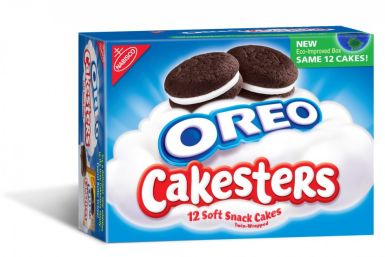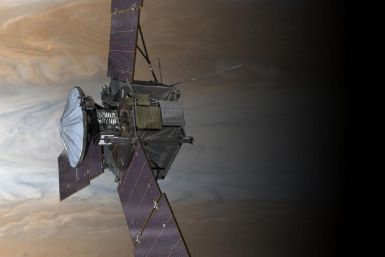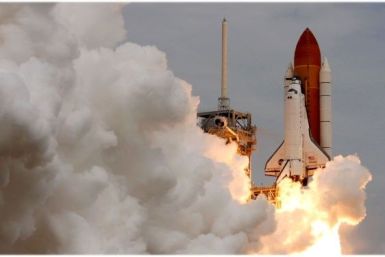Galileo Galilei, the Roman god Jupiter and his wife Juno are going into space
NASA is tracking the tropical storm Emily as it approaches Haiti and other nations.
In a surprising move on Thursday, Kraft Foods decided to split its company into two different sections: one focusing on candy and one focusing on grocery foods. IBTimes takes a look at where Kraft's most famous brands will be headed.
Scientists believe that they may be able to finally explain why the two sides of the lunar body are so different from each other. A new study published in the journal Nature has suggested that Earth originally had two moons in orbit around it until a second moon flattened itself to the bigger moon more than 4 billion years ago.
NASA said it will host a news briefing on Thursday about a significant new Mars science finding. The space agency did not give too many details in the release but said the new finding is based on observations from NASA's Mars Reconnaissance Orbiter (MRO), which has been orbiting the Red Planet since 2006.
Among the mysteries lying on the far side of the Moon are why it has a thick mountainous crust, while the near side which we see has low-lying lava plains and a much thinner crust than the far side. Scientists believe they may be able to finally explain the moon's asymmetry.
Earth once had two moons a small second moon until the two moons got smashed into each other to create a big lunar body.
Our planet's lopsided moon may have swallowed up its smaller sibling after a collision, which may have resulted in its asymmetric terrain, scientists propose. Erik Asphaug, a planetary scientist at the University of California, Santa Cruz, and his colleague Martin Jutzi recently wrote an article about the creation of the moon, which is published in the journal Nature.
Two papers recently published by scientists theorize that our universe might be contained in a bubble, and that there are other universes contained in numerous other bubbles making up a "multiverse".
The 1m-wide spherical tank was found in Lake Nacogdoches, near the Texas town of the same name where much of the debris initially fell. The tank was part of the ill-fated orbiter's electrical power system and contained liquid hydrogen or oxygen.
NASA's Dawn spacecraft snapped photos of the image and shows the stark difference between Vesta's day and night.
NASA's Juno spacecraft will explore the magnetic field of Jupiter.
A piece of space shuttle Columbia, which was disintegrated on re-entry over the Texas state on February 1, 2003, has emerged as the Texas lake dried up because of drought.
A piece of the space shuttle Columbia, which broke into pieces over the Texas skies on February 1, 2003, has been found in a Texas lake after a drought caused the waters to recede.
A NASA satellite caught a stunning video of an enormous plasma twister rising from the sun's surface on July 12.
Official confirmation has come from NASA that debris revealed by prolonged drought in Texas belongs to the Space Shuttle Columbia.
The molecules were detected in the star-forming region of the Orion constellation. The amount of oxygen found is ten times larger than what was indicated by previous observations of other molecular clouds, but is still well below theoretical expectations, according to ESA.
The Herschel Space Observatory has detected the first ever oxygen molecules in space, located in the Orion nebula, which ended a mystery lasting 230 years regarding oxygen in space.
Americans are not happy NASA is not ending the space shuttle program.
The founder of Space Exploration Technologies Corp. (SpaceX) would like to see humans set up a colony on Mars in the next few decades.
More debris from a spacecraft that broke up while re-entering Earth's atmosphere eight years ago has been discovered. On February 1, 2003, space shuttle Columbia scattered debris in the East Texas city of Nacogdoches.
The first close-up pictures of the asteroid Vesta, a protoplanet that dates back to the early days of the solar system, revealed a surprisingly diverse terrain and several unexplained geologic features, NASA scientists said on Monday.






































